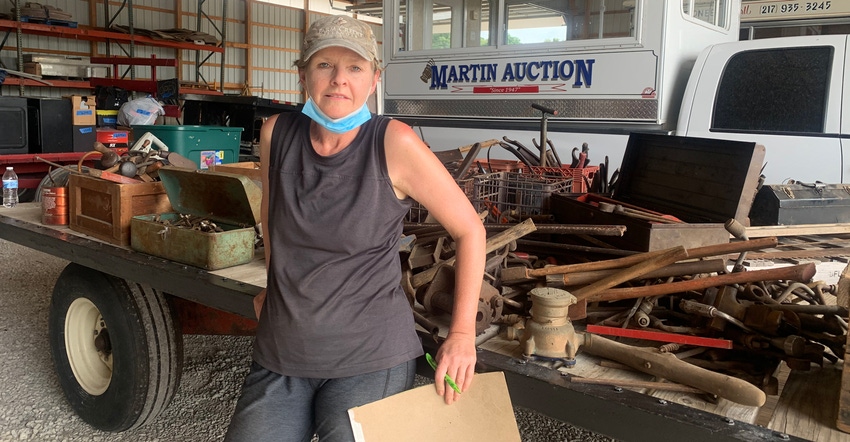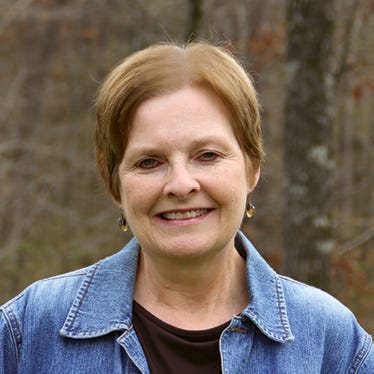September 14, 2020

This past summer, I spent several weeks emptying out the Illinois farmhouse in which I was raised and the outbuildings where Dad and my uncle used to park their equipment and store seed in preparation for planting. To say that the job of loading nearly a dozen hayracks for auction while distributing antique farm equipment to the county museum and everyday tools to our neighbors was a big one is an understatement.
Turns out, Dad never threw out anything. My ancestors immigrated to the United States from Counties Tipperary and Cork in the southern region of Ireland in the 1870s, and the primitive equipment stored in the sheds, corn crib, attic and basement reflected the entirety of that 150-year history. I found:
horse-drawn plows, yokes and hitching posts
ornate hay trolleys and iron and wood pulleys
sheep shears, cattle prods, and chicken and pig catchers
rustic knife sharpeners, carpet beaters and scales of every shape and size
check-row planters and intact wire to trip the dropping mechanism
scythes and sickles, wooden wagon jacks and walk-behind cultivators
milk cans, curtain stretchers, butter churns, kerosene lamps, early-issue blue Mason jars
faded but still colorful seed bags reflecting times gone by, including some government-issued bags from both World Wars and sacks bearing ads for seed corn distributors and grain elevators that ceased operation decades ago
weathered ropes, chains and hitch pins
vintage seed spreaders and measuring wheels
survey maps, plat books and land deeds scattered alongside newspaper clippings announcing marriages, ordinations and deaths
I always knew there was a lot of “stuff” stashed away in the nooks and crannies of the homeplace. But I didn’t expect the emotional tug I experienced sifting through it all. Herein laid not just artifacts from the past, but the struggles and strides that built our family farm legacy — the roots that ground not only me, but also my children and future generations who will carry on this tradition.
Strong survive
As I retrieved and examined each item to determine its rightful home, I held in my hands living proof that farming is not for weaklings. My great-great-grandfather, great-grandfather and even grandfather for many years drove a plow through a field without the benefit of modern machinery. They worked in tandem to get the crops into the field in the spring and out come fall, keeping an eye on the glistening hides of horses and mules that signaled overheating, and listening to the clicking of wire to ascertain that seeds had been deposited into the soil in neat increments.
My people were not easily deterred — not by devastating economic droughts, too much or too little rainfall, the infestation of cutworms or locusts. Knowing their perseverance helps this nonfarm heir stick with it when local grain elevators close and familiar personnel move away, bills pile up, and pandemics and politics drive down prices.

FARMSTEAD: The aerial photograph of the farmstead, beloved by farm families all over the Midwest, hung in the Ryan farmhouse for decades.

The Ryans, both our family and our farm, aren’t going anywhere. Three loyal operators — Bob, Fritz and Mark — continue to pop by the sheds to borrow the occasional tool, and sometimes guide their drills and tractors inside in anticipation of a full day in the fields come dawn.
And Tanya, my best friend since childhood, is preparing to move into the farmhouse where she and I spent hours listening to records, giggling over boys and staying up way past the time Dad told us to get to sleep because there would be plenty to do in the morning.
As I left the farm and headed south toward Birmingham, I felt the weight of the “things” that represent my family’s American farm story lifted from my shoulders. We will no longer dwell in that house or fill the sheds and cribs with our possessions in a literal sense. But etchings of who we are and what we’ve brought to the place run deep in rich Illinois soil.
Ryan is a farmer’s daughter from Clinton, Ill., and a professor at the University of Alabama at Birmingham. Following her father’s death and mother’s relocation to her Alabama home, Ryan manages the family farm from afar. The opinions of this writer are not necessarily those of Farm Progress/Informa.
About the Author(s)
You May Also Like






